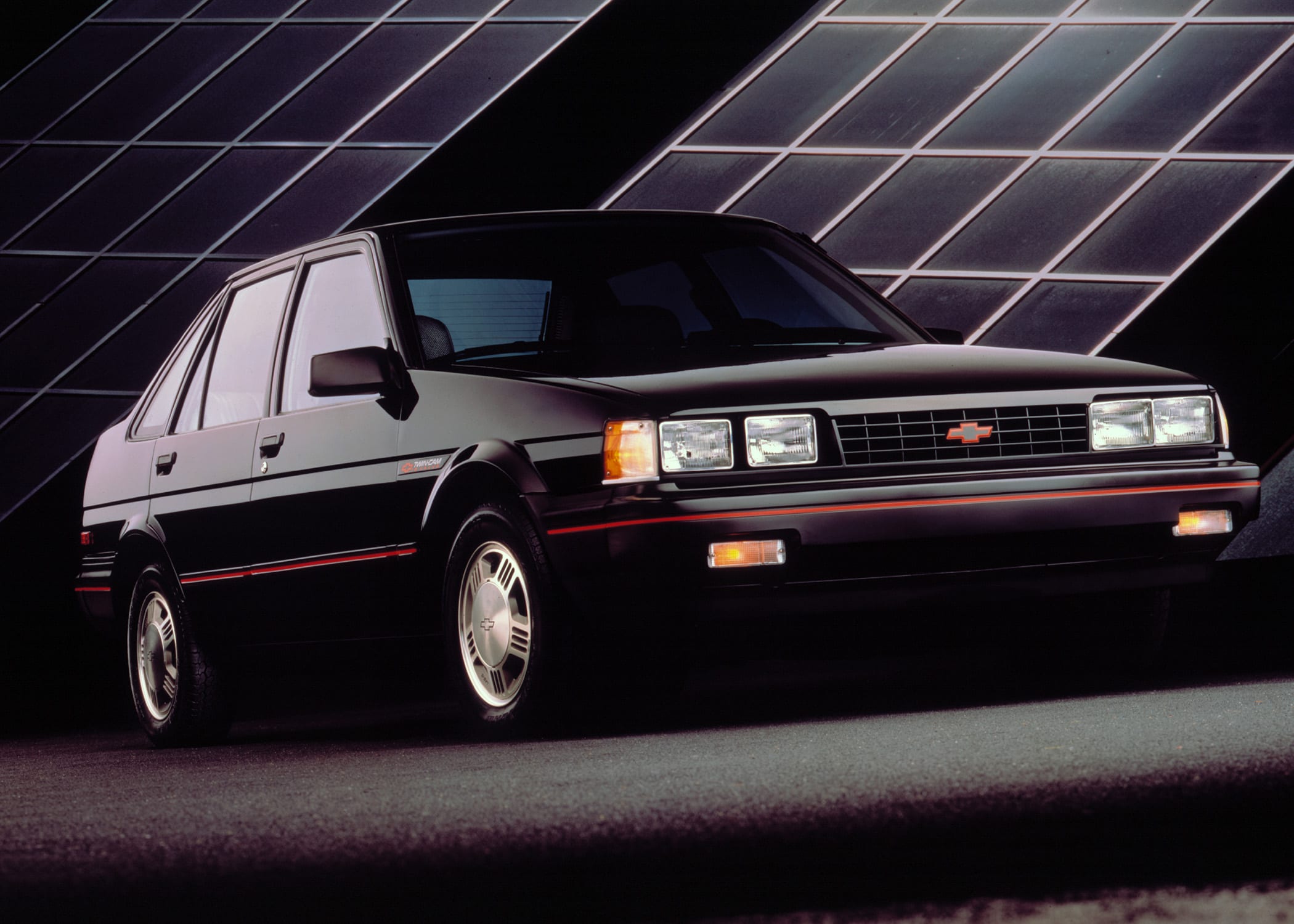The Chevy Nova most of us remember wasn’t built in the eighties. It was made in the sixties and early seventies. It was powered by big V8s, and they’re a desirable car today amongst baby boomers. Go to a car show after the global pandemic ends and owners of SS Novas will still insist you “don’t fucking touch it.”
The Novas of the eighties all rolled out of a big factory that said NUMMI on the side in Fremont, California. A joint venture between GM and Toyota, the factory was built in 1984 as a learning experience for General Motors and a North American production hub for Toyota. What General Motors learned was that they could just make the new Nova a re-badged Corolla. Those GM people, they learn quickly, let me tell you.

This is just like the later Chevy Prizm, which was also a Corolla. What a great name for a car about as exciting as that beige color they make hearing aids.

Initial D had nothing to do with it.
Unfortunately for drifting enthusiasts, this doesn’t mean it was based on the AE86. For anybody who’s unfamiliar with that car, it’s the 2 door Corolla in this generation that happened to be RWD (the Corolla sedan the Nova is based on is FWD). It got featured in a Japanese anime series about drifting (called Initial D), so now it’s even more popular and it gets drift-taxed. That’s the whole story.

The FWD Nova was on the AE82 platform. Base power came from a four-cylinder 1.6-liter engine making 74 horsepower. It was called the 4A-C, and importantly, it was only SOHC. I usually say ‘single jingle’ but I could understand if people thought I was strange for saying that.
The base car had rear drums, no sway-bars, and could be described as ‘OK’. It was, after all, a Camry.
The 4A-GE-powered Nova Twin-Cam

Toyota’s 4A-GE was one of the reasons why the AE86 became popular in the first place. It sounds nice, its stock redline is 7500 RPM, and it makes 110 horsepower from 1.6 liters. People in the aftermarket have revved them up as high as 11,000 RPM for race-spec cars, and they’re still very popular today.
The 4A-GE pulled the 2300lb Nova to sixty in around nine seconds. This isn’t bad, especially by eighties standards. The Nova Twin-Cam also got a stiffer suspension, sway-bars (wow) and four-wheel discs. These disc brakes managed to stop the Nova from 55 in only 105 feet, which is impressive even by today’s standards.
The Twin-Cam was only made for one year; 1988. This short run and low demand (due to its relatively high price) meant they only ended up making 3300. It came in any color you wanted, as long as that was black. A nice red stripe also festooned the bumpers and rocker trim. This would remind other drivers that you had two camshafts and were not to be trifled with.
MotorWeek and others to the Rescue
Luckily for all of us, MotorWeek did a review of this car when it came out. You can watch it below.
There’s also a current owner of one of these cars, Ethan Tufts, who has made a few excellent videos about the one he drives every day. I’m putting them below as well.


Leave a Reply